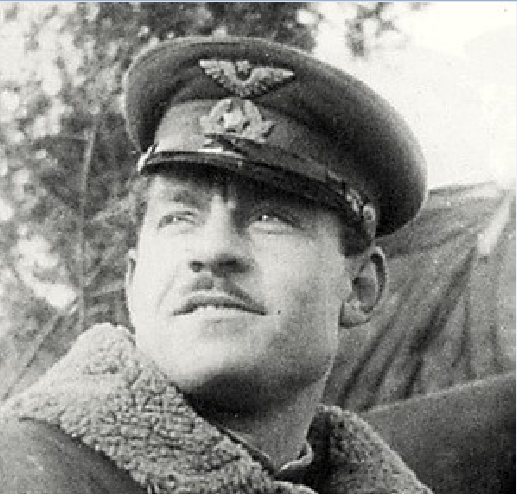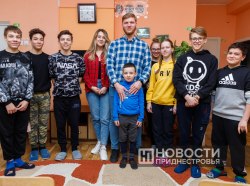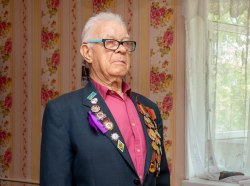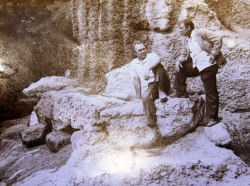During the Great Patriotic War, thousands of Pridnestrovians fought on its fronts. Many fought in the air: the success of ground combat operations depended in large part on the actions of aviators. We will talk about Pridnestrovians who showed aerobatics in the battles of the greatest war in the history of mankind.
Semen Shestakov
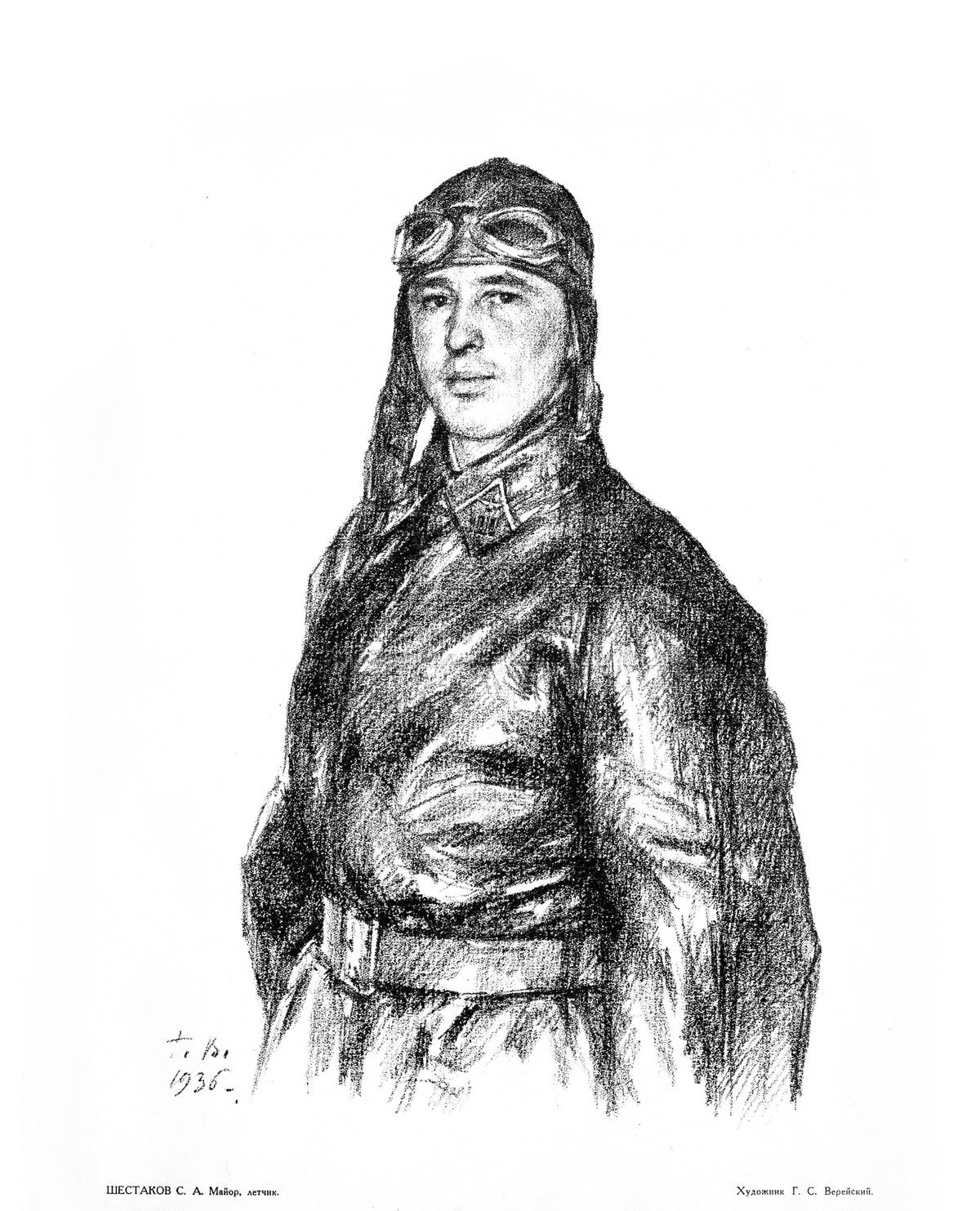
When talking about pilots-natives of Pridnestrovie, Semen Alexandrovich Shestakov (1898-1943) from Bendery is surely the first to be remembered.
He had never become a Hero of the Soviet Union. Although he did deserve it. It’s just that when he did something truly unthinkable at the time, there wasn`t a title for that. Two of his exploits were evaluated by the Soviet Government with both orders available in the award system - the Red Banner and the Red Banner of Labor. He received them for record flights.
We are talking about Moscow-Tokyo-Moscow (1925) and Moscow-New York (1929) flights. At the time, such long-distance routes were a real technological breakthrough and demonstrated the growing power of Soviet long-range aviation.
He was born on February 21, 1898 in the family of a paramedic in a city hospital. The future aviator discovered outstanding abilities to learn in his childhood, thanks to which Shestakov was enrolled to study at a real school for free.
In August 1917 he was drafted into the army and sent to Petrograd, where he joined the Bolsheviks. It was Shestakov who established telephone communications at their headquarters in Smolny during the well-known October events that determined the fate of Russia.
His extraordinary cognitive abilities led him to the Aeronautical Park of the Northern Front, after that he became one of the most outstanding Soviet pilots in the era of aviation.
The famous pilot from Bendery, who discovered the America from the air as well as his colleagues on intercontinental flight, became a legend and a role model for subsequent generations of pilots.
By the beginning of World War II, Semen Shestakov was a test pilot. He tests the latest developments of the Soviet aircraft industry. But he is eager for the front. He sends report after report to the Air Force personnel department. Finally, in February 1942, the command granted his request.
Given Shestakov’s rich experience, he is appointed commander of a long-range bomber, and later a fighter regiment. In June 1943, Shestakov’s division was transferred to the Orel-Kursk direction. Here he teaches young pilots, shares the art of aerobatics, orientation and interaction in the air.
In the Battle of Kursk, Shestakov`s 146th Aviation Regiment covered our tanks and infantry from the air. On August 1, 1943, he organized the next flight of eight fighters. It turned out that one of the planes had not been fixed while one of the pilots (the youngest and inexperienced one) had been without a leader. So Shestakov decided to fly with him. Soon, two aircrafts collided with an enemy squadron. Semen Alexandrovich ordered the wingman to retreat, and he himself covered up the young pilot. In an unequal battle, he was shot down. His remains were never found. The crash site of one of the pillars of Soviet aviation is still being sought.
Georgy Chernienko
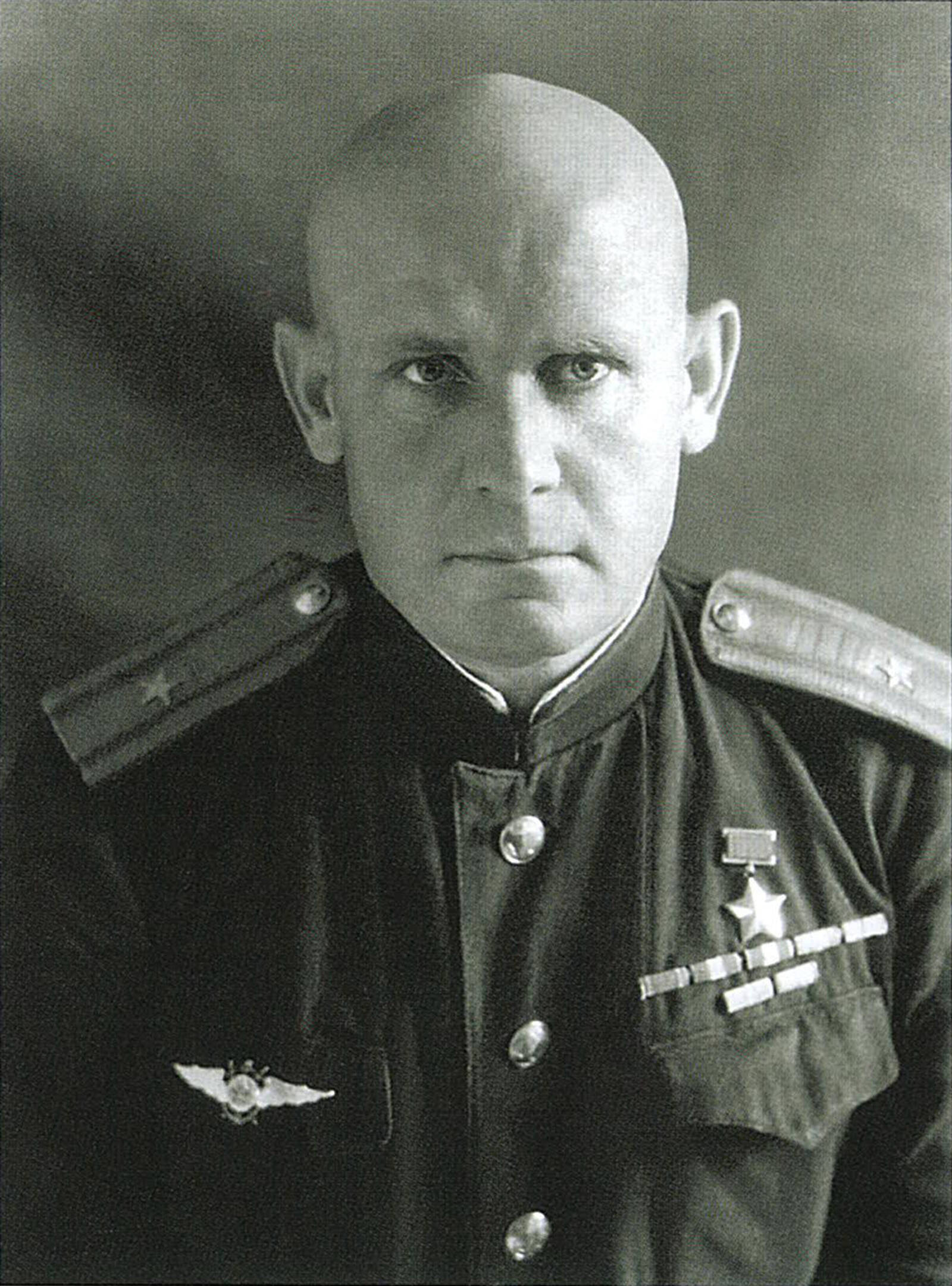
Among 2,271 airmen who were awarded the title of Hero of the Soviet Union in World War II, there are two natives of Pridnestrovie - Georgy Georgievich Chernienko and Stepan Kalinovich Kolesnichenko. The first one was a torpedo bomber, and the second was a fighter pilot.
Georgy Georgievich Chernienko was born on December 25, 1907 in Tiraspol. After finishing seven-year school, he worked with his father in a brick factory, combining work with studies at Rabfak. In 1927, the family moved to Donbass, where the future Hero of the Soviet Union worked in a mine. In 1929 he was drafted into the Red Army. At first he served as an anti-aircraft gunner, but was soon transferred to the First Military Pilot School named after Myasnikov in Sevastopol. After graduation, he served sequentially in the Belorussian Military District, in the aviation of the Black Sea Fleet and as a pilot instructor in the Yeisk Naval Aviation School named after Stalin.
He met the Great Patriotic War as part of the 2nd mine and torpedo regiment of the Black Sea Fleet. On the night of June 22nd to June 23rd 1941, he participated in the bombing of strategic assets in Romania.
Soon Chernienko was appointed commander of the squadron and flew DB-3F (IL-4). By November 1942, the squadron of the 5th Guards mine and torpedo aviation regiment of the 1st mine and torpedo aviation division of the Air Force of the Black Sea Fleet, under the command of the Guard Major Chernienko, flew 487 sorties, in which there were destroyed 4 enemy ships and 6 depots with ammunition.
Without interrupting combat work, the squadron pilots were at the same time retraining the MBR-2 air staff. Captain Chernienko himself had flown 115 sorties by that time, of which 74 in 1942. Acting from the territory of the Crimean peninsula, his squadron participated in the defense of Sevastopol, Odessa: it torpedoed enemy ships on communications in the Black Sea, laid mines, escorted ships, made flights to the Crimean partisans. On the last day of the defense of Sevastopol, Georgy Chernienko`s crew team accompanied transport with the defenders of the city, shot down by an enemy bomber. By June 1943, Georgy Georgievich flew 152 sorties. The air squadron entrusted to him destroyed 6 torpedo boats, 3 self-propelled landing barges, 7 ammunition depots, 4 railway junctions, 35 aircrafts at enemy airfields, 39 tanks, 6 artillery batteries, 2 crossings, and about 3,000 enemy soldiers and officers. After the resignation, Georgy Georgievich lived in Odessa. He died on February 17, 1982.
Stepan Kolesnichenko
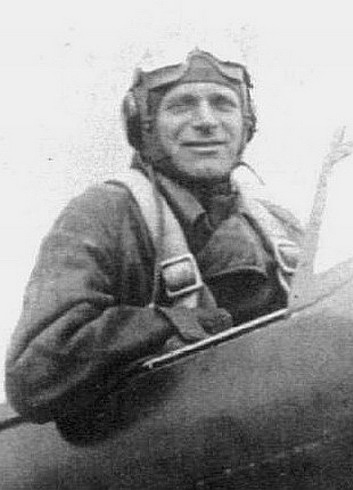
Native of Gyrtop village (Grigoriopol District) Stepan Kalinovich Kolesnichenko was one of the most successful fighter pilots of the Great Patriotic War.
He was born on December 24, 1913. He began working as a tractor driver while attending school. After finishing it, he entered the mechanical college. He was called up for military service, which took place in the coastal artillery of the Black Sea Fleet. He stayed for an extended service. He became interested in aviation. He visited Odessa flying club.
But the Soviet-Finnish War broke out, and Stepan Kalinovich was transferred to the Baltic. He met the Great Patriotic War as a cadet of the Odessa Pilot Flight School. First there was an evacuation near Stalingrad, and then to Frunze (now Bishkek, the capital of Kyrgyzstan). After he underwent a rapid military training, he was sent to the front in the spring of 1942. He died in a little more than a year - August 30, 1943.
Upon returning from a reconnaissance flight over the Krivenkovo farm, the Glukhovsky District of the Sumy region of Ukraine, he was reached by the Messerschmitt Four. It was Stepan Kalinovich Kolesnichenko`s 135th sortie and 27th air battle. During this time, according to some sources, the fighter pilot got 21 personal victories and there were also 4 victories in group, and according to others, 16 and 4, respectively. Plus, they destroyed four enemy aircraft and 2 tankers on the ground. September 2, 1943 Stepan Kalinovich Kolesnichenko was awarded the title Hero of the Soviet Union. The street he lived and the school he studied in were named after him in his native village of Gyrtop.
Semen Harhalup
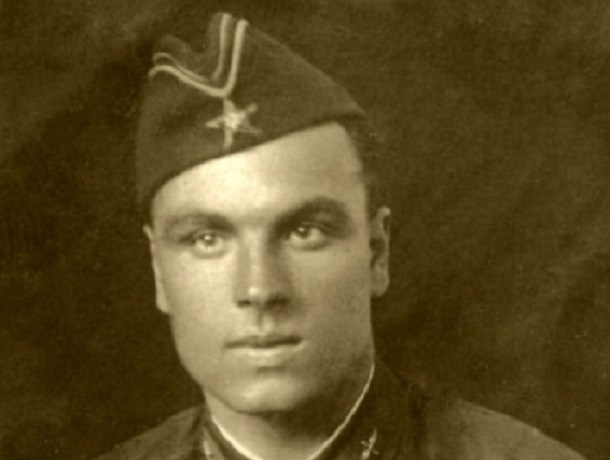
Among the natives of Pridnestrovie there is also a fighter pilot who has made an air ram. By the way, this happened in the skies over Moldova, in the Balti region. In that battle, Semen Ivanovich Harhalup shot one bomber down with machine-gun fire. When attacking the second one, machine guns jammed in his MIG-3. When ramming, both the Soviet fighter and the enemy bomber were badly damaged. The next day, when the Junkers made an emergency landing, it was finished off on the ground by our compatriot’s colleagues.
Semen Ivanovich Harhalup died on the seventh day of the war in an air battle with ten МE-110 10 twin-engine fighters near the village of Konstantinovka in the Kamenka District, where he was born in 1909. After the war, there was erected a monument with the inscription "Those Who Die in the Sky Above the Motherland Become the Sky Above it” at the crash site of his plane.
Ivan Pashchenko

After the war, there were several pilots, Heroes of the Soviet Union, who lived in Pridnestrovie. We begin the story about them with a man who fought valiantly in the Great Patriotic War and was one of the founders of the Pridnestrovian Moldavian Republic.
Ivan Vasilyevich Pashchenko was born on February 15, 1922 in the village of Krasnogvardeiskoye, Krasnodar Territory. He had been on the fronts of World War II since July 1944 after finishing Krasnodar Military Aviation School of Pilots.
He fought on the IL-2 attack aircraft. His first combat operation was Iasi-Chisinau one. Later he participated in Budapest, Balaton and Vienna offensive operations. He liberated Moldova, Romania, Bulgaria, Yugoslavia and Austria. He was shot down over Yugoslavia. He got to his native unit thanks to the Yugoslav partisans.
In addition to many targets destroyed on the ground (12 tanks, 5 anti-aircraft and 3 artillery batteries, a warehouse with ammunition, a railway train with troops and equipment, 23 vehicles with manpower), Ivan Vasilyevich has also air victories – there were 2 enemy fighters. After the Victory on May 11, 1945, he flew his “last” 115th sortie to attack the bridge, on which the remnants of the enemy troops intended to go to the Americans in Italy.
In post-war Tiraspol, he worked as a military instructor at urban vocational school GPTU-5 (now Tiraspol Technical College named after Y. A. Gagarin), and later was Chairman of the DOSAAF committee at the factory named after 40th anniversary of the Komsomol (now Odema). He was at the forefront of the revived Black Sea Cossack army. In 1996, after the death of his wife, he moved to his daughter in Russia. Ivan Vasilyevich Pashchenko passed away on October 16, 2014 and was buried on the Alley of Heroes at the Military Memorial Cemetery in Yaroslavl.
Nikolay Shutt
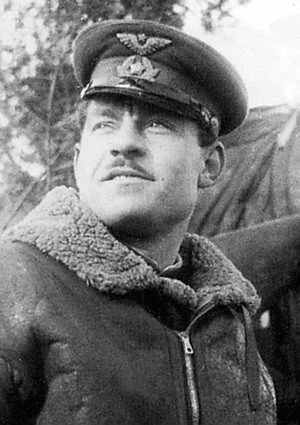
After a war, in Tiraspol there lived a fighter pilot, Hero of the Soviet Union, who began his military career even before World War II - in air battles in the summer of 1939 with the Japanese over the Halhin-Gol River in Mongolia.
Nikolay Konstantinovich Shutt was born on December 17 (30), 1916 in the village of Pleschenitsy, now a settlement in the Logoisk District of the Minsk region. He consistently studied at a vocational school of metalworkers in the city of Rogachev, driving school in Bobruisk and at a workers` faculty of the Minsk Medical Institute. Since 1936 he worked at the Minsk confectionery factory Kommunarka. His path to aviation began with classes at the Minsk flying club. In 1938 he graduated from the Borisoglebsk Military School for pilots. After the battles at Halhin-Gol, he served in the Transcaucasian Military District, where beginning of the war caught him.
The pilot got to the front in November 1941. He defended the Crimea and the North Caucasus. Participated in the Battle of Kursk, the liberation of Ukraine, Moldova, Romania. He was a member of Berlin and Prague offensive operations. After the victory over Nazi Germany, he fought in the Far East.
The data on the victories won vary somewhat, depending on the sources. According to one data, Nikolay Konstantinovich Shutt shot down 17 enemy planes personally and 5 of them in the group, and according to the other, 16 and 2, respectively. Being retired, he first lived in Belarus in the village of Pukhovichi in the Minsk region, and then moved to Tiraspol, where he worked as a driver. Hero of the Soviet Union Nikolay Konstantinovich Shutt died on March 30, 1977.
Akim Karpenko
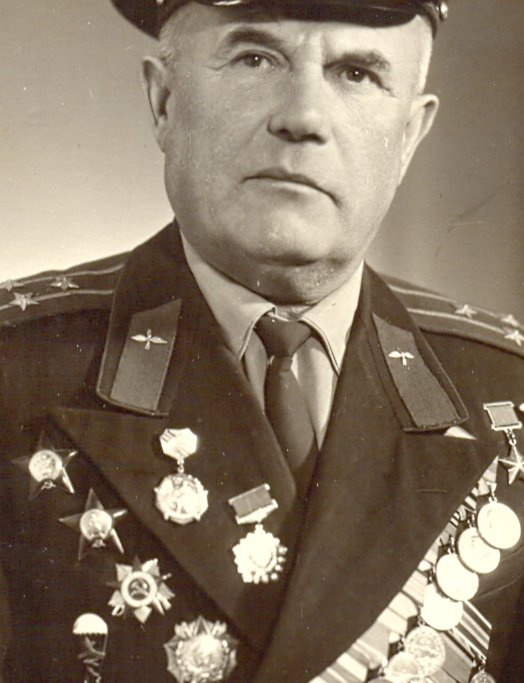
Another pilot who was awarded the title Hero of the Soviet Union and who lived in Pridnestrovie for many years is Akim Pavlovich Karpenko.
He was born on September 4 (17), 1915 in the village of Loev (now a district center in the Gomel region of Belarus), where, after finishing school, he worked as a turner in the shipbuilding school Yunii Vodnik. In 1933 he was called up to the Red Army. During the service he graduated from the 5th Leningrad Military School of Aviation Equipment in Arms, in 1940 - Chkalov Military Aviation School of Navigators and navigator courses.
By the way, Akim Karpenko fought twice in the skies over Moldova - in defensive battles in the summer of 1941 and during the Iasi-Chisinau operation. In between and after, there was assistance to Soviet troops in the defense of the Caucasus, the breaking of the siege of Leningrad and in the capture of Berlin.
On March 13, 1944, by decree of the Presidium of the Supreme Soviet of the USSR, Major Akim Pavlovich Karpenko was awarded the title Hero of the Soviet Union. During the war years, the navigator of the 5th Guards Bomber Sevastopol Red Banner Long-Range Aviation Regiment flew 266 sorties to bombard enemy strategic targets and accumulations of equipment, as well as to supply partisan detachments on the DB-3F (IL-4).
On his battle account, there are 14 enemy tanks, 13 destroyed aircraft at airfields and 4 in the air, 56 vehicles, 13 warehouses, as well as 4 bridges and crossings. He had been in the Air Force after the war until 1954. Having retired, he worked at the plant named after S. M. Kirov (Tiraspol) and in the Dniester River Shipping Company. Akim Pavlovich Karpenko died on September 10, 1974.

